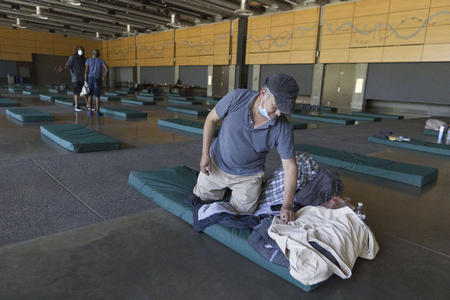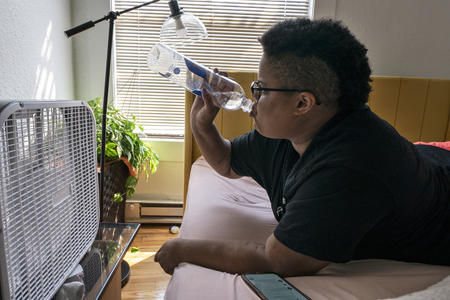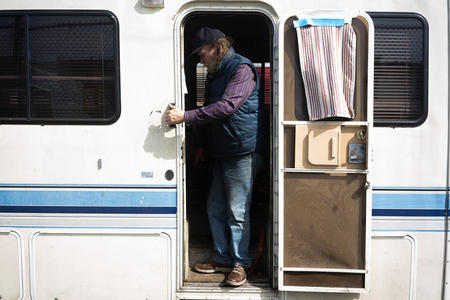Seattle is one of the least air-conditioned metro areas in the country, with only 44% of homes air conditioned. While there are concerns about the long-term impacts of air conditioning on climate change, many more people are adding air conditioning to their homes than in previous years, with climate-friendlier forms of cooling like heat pumps also gaining in popularity. King County has received more than 4,600 applications for residential mechanical permits including the term “heat pump” in Seattle in 2022 alone.
Para leer este artículo en español, haga clic aquí.
Companies and municipalities across the region are working to help lower-income homeowners have access to this technology through rebate programs. Puget Sound Energy’s Efficiency Boost program has helped nine low-income households buy heat pumps in King County, while the city of Seattle has helped 923 homes convert from oil furnaces to heat pumps, including 65 low-income homes.
But both heat pumps and air conditioning remain out of reach for many. Even purchasing and installing the least expensive heat pumps can run homeowners thousands of dollars, and low-income renters rarely have the means or permission to install air conditioning in their homes. As of 2021, the majority of Seattle residents — 366,000 people — were renters, which has pushed Puget Sound Energy to explore how it can appeal to landlords to make more energy-conscious cooling and heating choices.
“As we continue to evolve and look into this work, we're trying to figure out the best pathways to reach more of the landlord population to incentivize and encourage them to take part in these programs that we have available,” said Puget Sound Energy’s Gilbert Archuleta.
The state is using regulations to push builders forward.
The Washington State Building Code Council recently required heat pumps in most new large buildings, which will help renters living in them. But many people in existing homes still lack access to cooling systems.
One way the state is trying to increase access is by opening up the Low-Income Home Energy Assistance Program to cooling support. The program historically helped homeowners at or below 150% of the federal poverty line with heating grants and heating system replacements, but as of October 2021 it has been offering grants for mobile air conditioning units able to cool 300-square-foot spaces.
Since doing a communications push to increase awareness about the program with the Department of Social and Human Services about three months ago, program manager Brian Sarensen says the program has received 50 to 100 phone calls daily from people statewide asking how to apply for cooling assistance.
So far in 2022, the energy assistance program has provided 1,324 air conditioners to Washington residents, with a majority going to King County households.
Coordinating agencies are trying to get the word out as well. Byrd Barr Place, one of the three organizations coordinating the low-income air conditioning program in King County, has contacted around 4,000 people who it believes are eligible to request A/C units. It has validated 279 A/C applications so far, with employees working through a queue of 621 applications.
“There has been a lot of interest and the folks we are serving are all at or below 150% of FPL, so these are folks that would not otherwise be able to afford a unit,” says Byrd Barr’s Meredith Sibley. “We are serving many seniors living on fixed income and this program has most certainly increased their access to cooling and comfortable shelter.”
Sibley says that as of mid-July, Byrd Barr had delivered 188 units, and another 91 units have been ordered or are still en route to homes.
A large number of the recipients are renters, and the grant was designed with them in mind, Sarensen says. The air conditioning units can travel with them even if they need to move, as landlords aren’t required to provide air conditioning. However, the energy assistance program requires landlords to sign off on renters participating in the program if the renter lives in a hi-rise. “There is a concern about overwhelming the building’s power supply,” Sibley said.
Air conditioning isn’t a perfect solution and many people with access to air conditioning still suffer heat illness. Some people avoid running their air conditioning due to the cost of energy to run the units, and residential air conditioning isn’t all-powerful.
“Even the air conditioning websites will say, look, your residential-scale air conditioner can only cool you about 20 degrees Fahrenheit. If you're in the middle of a 115 degree heat wave, you need to supplement with other cooling strategies,” says Dr. Alexandra Rempel, a cooling expert at the University of Oregon.
To that end, the energy assistance program also offers a $500 hardship benefit to help cooling-assistance recipients pay for the electricity needed to power their air conditioners. “It didn't make sense to me as the program manager to not provide additional assistance, if necessary, to pay electricity bills,” Sarensen said.
At this point, between 7% and 10% of the agency’s grant spending is going toward cooling, Sarensen says. Demand for energy assistance has been so high in King County that the state Department of Commerce is working to get more funding for the Multi-Service Center — one of three service centers facilitating the cooling program in King County — to expand its service.
“We expended all our current LIHEAP funding for this program year on providing energy assistance (direct payments for energy bills) and at this time are awaiting the additional LIHEAP funding … so that we can start distributing AC units,” says Multi-Service Center’s Oksana Savolyuk, who directs its energy program, via email.
“We have definitely seen an interest, and are ready to purchase and distribute units as soon as we receive the funding from Commerce,” Savolyuk said. She added that Multi-Service Center plans to offer A/C units to all households applying for energy assistance at the time of their interview next year.
Getting air conditioners into people’s hands remains a challenge, despite the government funding.
Sibley, with Byrd Barr Place, says the brand-new program required forming new relationships with vendors and establishing a line of credit to buy A/C units. “The LIHEAP grant is reimbursable only, which means BBP has to front all of the money for the program and invoice the state to be repaid,” Sibley says. Another significant barrier is staff capacity. It takes a lot of combined staff time to purchase units, Sibley says, and to educate clients about the new program.
“I don't know if what we put in place is going to be sufficient — if it was too much, if it was just right, not enough — because we don't have any data for a full season,” Sarensen says.
But big changes may already be on the way to benefit people who rent or otherwise have limited ability to install air conditioning systems. On July 19, the Biden administration published an information memorandum on 2022 guidance related to LIHEAP funds and heat stress that include “establish[ing] cooling centers.” Sarensen said the state Department of Commerce is evaluating how it might use this funding to establish cooling centers, and whether community action agencies — the local groups facilitating LIHEAP funds, like Multi-Service Center and Byrd Barr Place — would be interested in participating.







